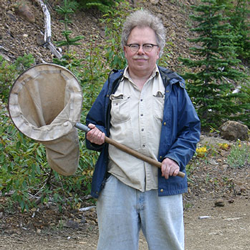
Support Arachnology & Entomology
Your gift makes it possible! We couldn't do what we do without generous donor support for collections care, research and public outreach.
Other photos are used courtesy of the photographers (who retain all rights), as credited. The photos by Bob Thomson were given by him to Rod Crawford (author of this page); the J.W. Thompson Co. photo of a yellow flower spider and the Margaret Davidson drawing of a hobo spider belong to the Burke Museum. A few drawings are by the author, but most are adapted from public domain sources, either non-copyright or copyright expired. Many of the line drawings are by classic arachnologist James Henry Emerton (1847-1930) in his late 19th century works on New England spiders.

Your gift makes it possible! We couldn't do what we do without generous donor support for collections care, research and public outreach.